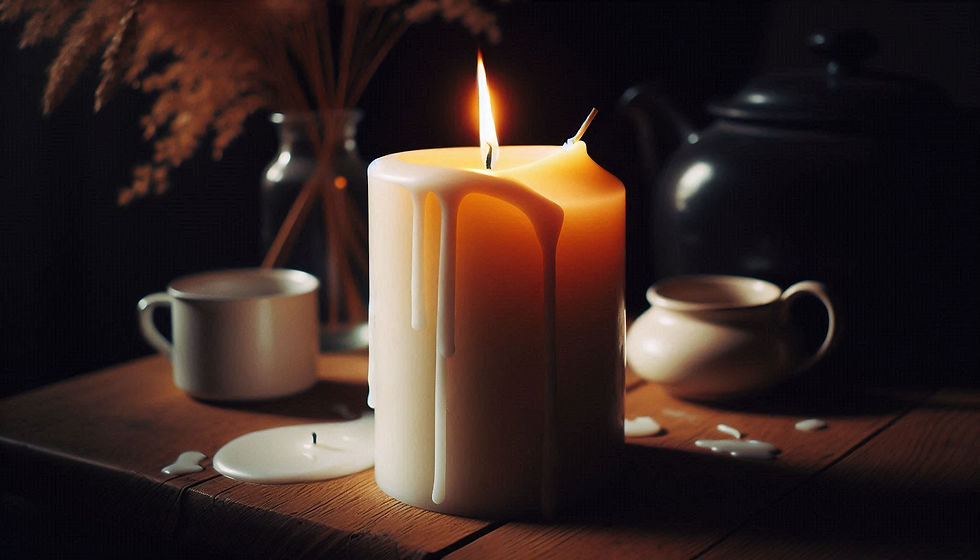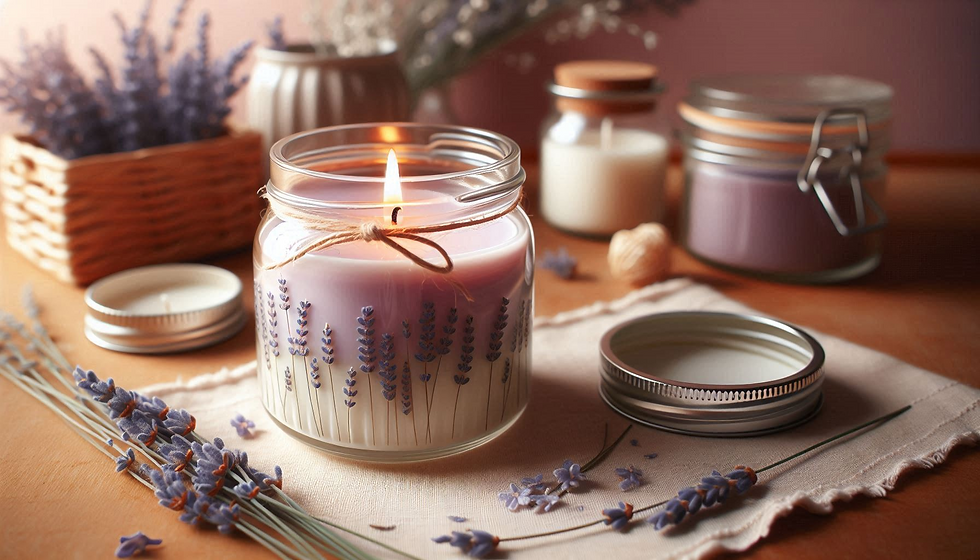Troubleshooting Common Candle Making Issues
- pamela Bloem
- Jul 10, 2024
- 3 min read
Candle making is a delightful and rewarding craft, but like any art, it comes with its own set of challenges. Beginners often encounter issues that can be frustrating, but understanding how to troubleshoot these problems can make the process smoother and more enjoyable. Here are some common candle making issues and tips on how to resolve them.

1. Tunneling
Problem: Tunneling occurs when a candle burns down the center, leaving a t
hick ring of unmelted wax around the edges.
Solution: This typically happens if the candle is not burned long enough during the first burn. To prevent tunneling, ensure the initial burn lasts long enough for the melted wax pool to reach the edges of the container. A good rule of thumb is to burn the candle for one hour per inch of its diameter. If tunneling has already occurred, you can wrap aluminum foil around the top of the candle, leaving an opening for the wick. This helps to reflect heat and melt the outer wax.
2. Wick Issues
Problem: Wicks that mushroom, flicker, or drown can ruin the candle's performance.
Solution:
Mushrooming: This is when a carbon buildup forms on the wick, causing it to look like a mushroom. It can lead to excess soot and smoke. To avoid this, trim the wick to 1/4 inch before each burn.
Flickering: If the flame flickers, it may indicate a drafty environment or an improperly sized wick. Move the candle to a more stable environment and ensure you're using the correct wick size for your candle diameter.
Drowning: If the wick drowns in the wax, it might be too small for the candle. Make sure you’re using a wick appropriate for the size and type of wax you’re using. Alternatively, pour out some melted wax if it’s overwhelming the flame.

3. Frosting
Problem: Frosting appears as a whitish coating on the surface of soy wax candles.
Solution: Frosting is a natural characteristic of soy wax, and while it doesn’t affect the performance, it can be aesthetically displeasing. To minimize frosting, use a high-quality soy wax and pour at a slightly lower temperature. Adding a small amount of coconut oil can also reduce frosting.
4. Wet Spots
Problem: Wet spots are areas where the wax has pulled away from the container, creating an appearance of wet patches.
Solution: Wet spots are usually a cosmetic issue caused by the wax shrinking as it cools. To reduce their occurrence, preheat the containers to a warm temperature before pouring the wax. Pouring the wax at a slightly lower temperature can also help minimize the formation of wet spots.
5. Air Bubbles
Problem: Air bubbles trapped in the wax can create an uneven texture and affect the candle's burn quality.
Solution: Stir the melted wax gently to avoid incorporating air. Pour the wax slowly into the container to minimize bubble formation. If bubbles are already present, you can use a heat gun to gently warm the surface of the candle, which helps to release trapped air.
6. Uneven Burning
Problem: The candle burns unevenly, with one side melting more than the other.
Solution: Ensure that the wick is centered and straight when setting up the candle. If the wick shifts during pouring, reposition it immediately. Using a wick holder or centering device can help keep the wick in place.
7. Scent Throw Issues
Problem: The candle’s fragrance is either too weak (cold throw) or too strong/burning off too quickly (hot throw).
Solution:
Weak Scent Throw: Ensure you’re using the appropriate fragrance load for your wax type. Typically, this is between 6-10% of the wax weight. Allow the candles to cure for at least 48 hours (up to two weeks for the best results) before burning, as this allows the fragrance to fully bind with the wax.
Strong/Overpowering Scent: Reduce the fragrance oil percentage or choose a lighter fragrance. Ensure the candle isn’t burning too hot, as a high temperature can cause the fragrance to dissipate too quickly.

While candle making can present various challenges, understanding and troubleshooting common issues can greatly enhance your candle-making experience. With practice and attention to detail, you can create beautiful, high-quality candles that burn evenly and smell wonderful.
Remember, patience and experimentation are key, so don’t be afraid to tweak your process and try new solutions.






Comments